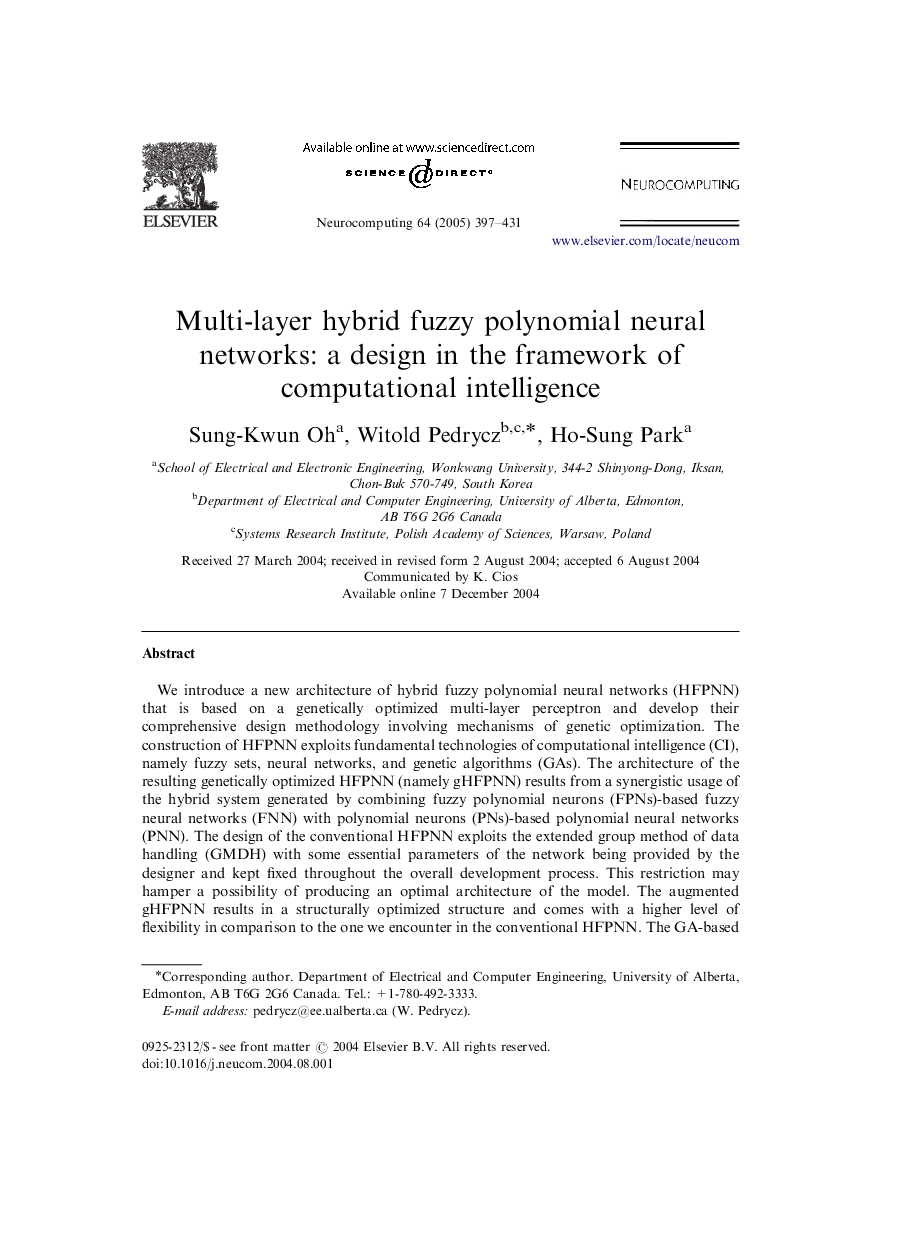| کد مقاله | کد نشریه | سال انتشار | مقاله انگلیسی | نسخه تمام متن |
|---|---|---|---|---|
| 9653579 | 679201 | 2005 | 35 صفحه PDF | دانلود رایگان |
عنوان انگلیسی مقاله ISI
Multi-layer hybrid fuzzy polynomial neural networks: a design in the framework of computational intelligence
دانلود مقاله + سفارش ترجمه
دانلود مقاله ISI انگلیسی
رایگان برای ایرانیان
کلمات کلیدی
موضوعات مرتبط
مهندسی و علوم پایه
مهندسی کامپیوتر
هوش مصنوعی
پیش نمایش صفحه اول مقاله

چکیده انگلیسی
We introduce a new architecture of hybrid fuzzy polynomial neural networks (HFPNN) that is based on a genetically optimized multi-layer perceptron and develop their comprehensive design methodology involving mechanisms of genetic optimization. The construction of HFPNN exploits fundamental technologies of computational intelligence (CI), namely fuzzy sets, neural networks, and genetic algorithms (GAs). The architecture of the resulting genetically optimized HFPNN (namely gHFPNN) results from a synergistic usage of the hybrid system generated by combining fuzzy polynomial neurons (FPNs)-based fuzzy neural networks (FNN) with polynomial neurons (PNs)-based polynomial neural networks (PNN). The design of the conventional HFPNN exploits the extended group method of data handling (GMDH) with some essential parameters of the network being provided by the designer and kept fixed throughout the overall development process. This restriction may hamper a possibility of producing an optimal architecture of the model. The augmented gHFPNN results in a structurally optimized structure and comes with a higher level of flexibility in comparison to the one we encounter in the conventional HFPNN. The GA-based design procedure being applied at each layer of HFPNN leads to the selection of preferred nodes (FPNs or PNs) available within the HFPNN. In the sequel, two general optimization mechanisms are explored. First, the structural optimization is realized via GAs whereas the ensuing detailed parametric optimization is carried out in the setting of a standard least square method-based learning. The performance of the gHFPNN is quantified through experimentation where we exploit data coming from processes of pH neutralization and NOx emission. These datasets have already been used quite intensively in fuzzy and neurofuzzy modeling. The obtained results demonstrate superiority of the proposed networks over the existing fuzzy and neural models.
ناشر
Database: Elsevier - ScienceDirect (ساینس دایرکت)
Journal: Neurocomputing - Volume 64, March 2005, Pages 397-431
Journal: Neurocomputing - Volume 64, March 2005, Pages 397-431
نویسندگان
Sung-Kwun Oh, Witold Pedrycz, Ho-Sung Park,